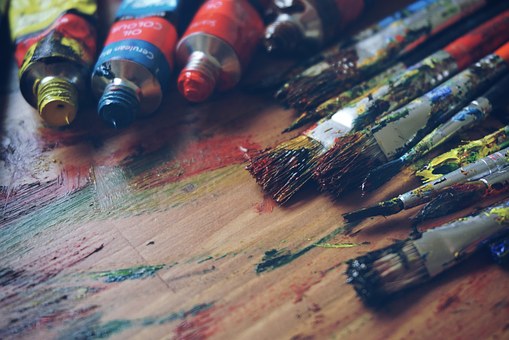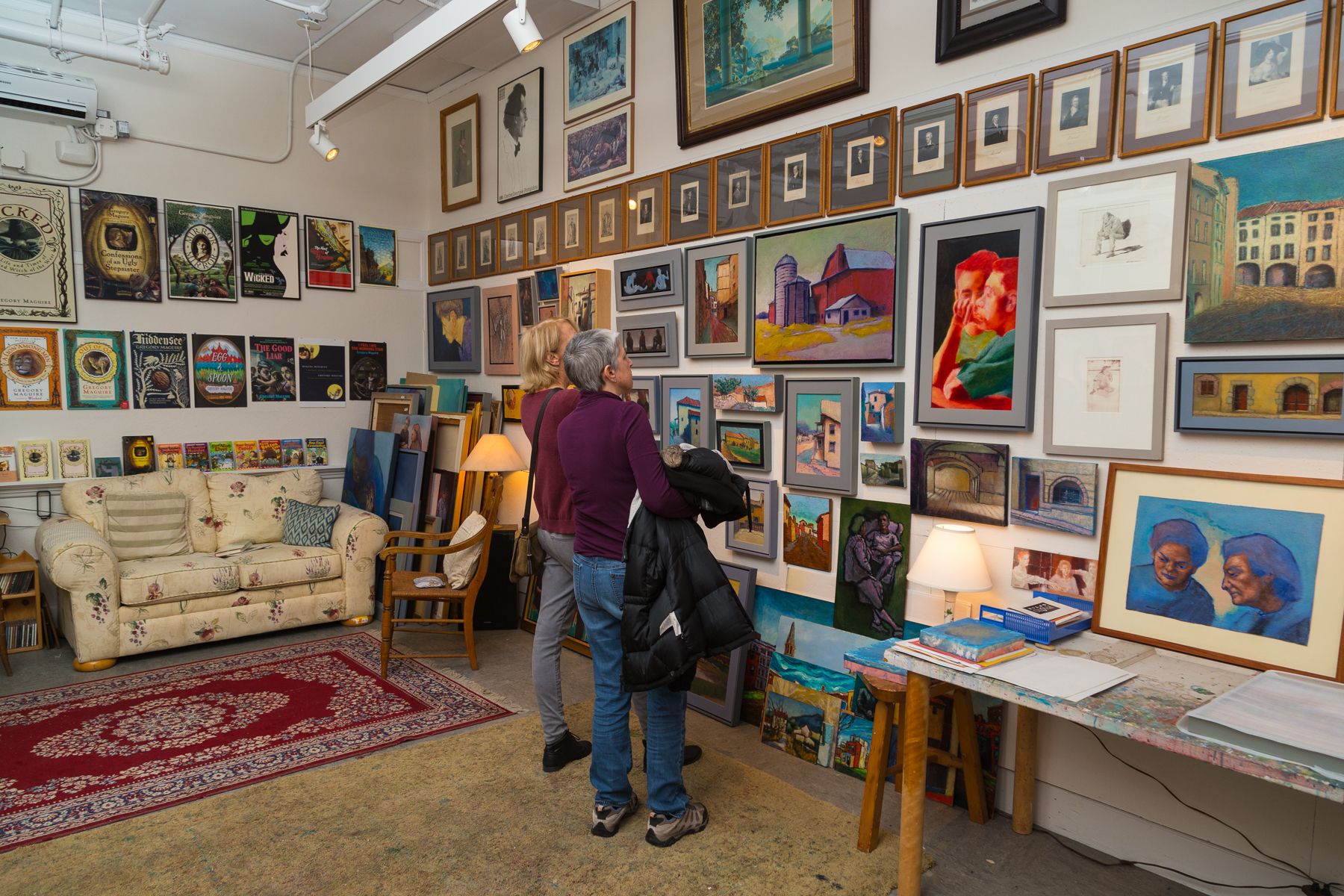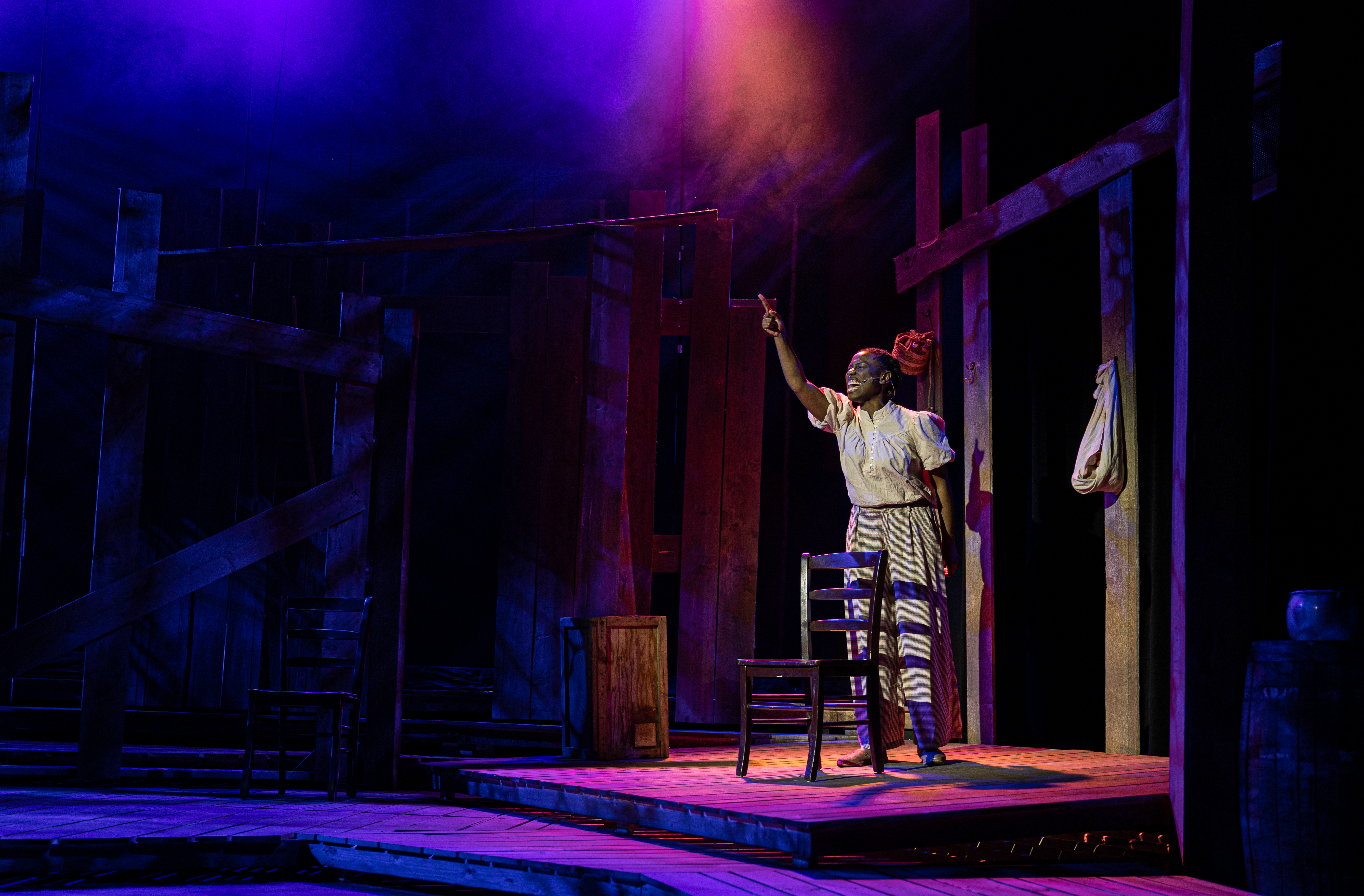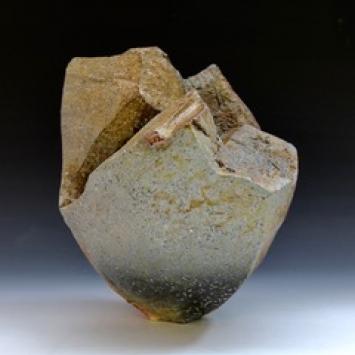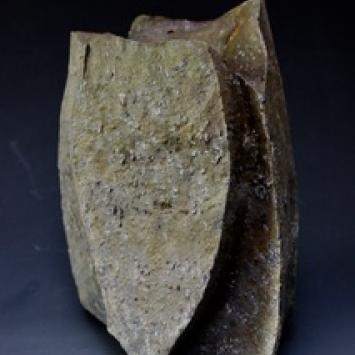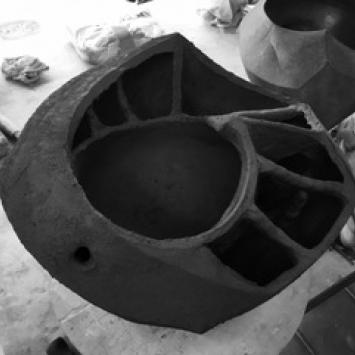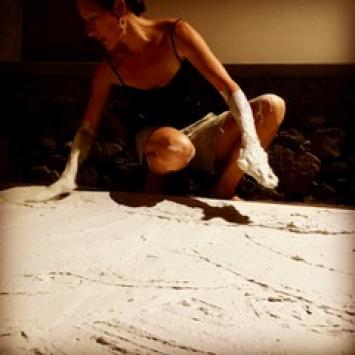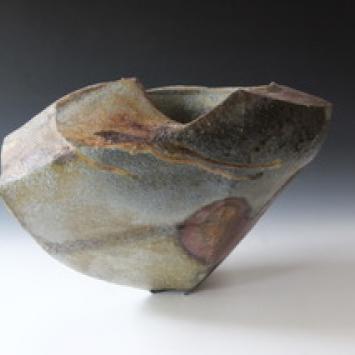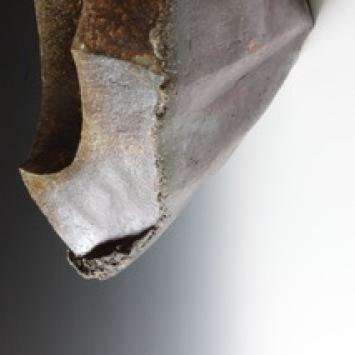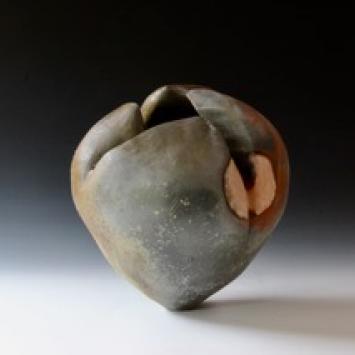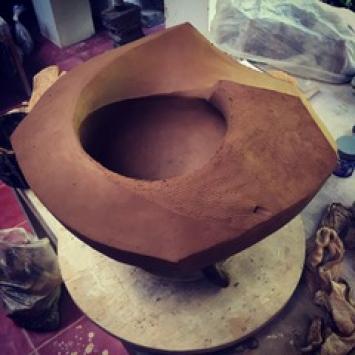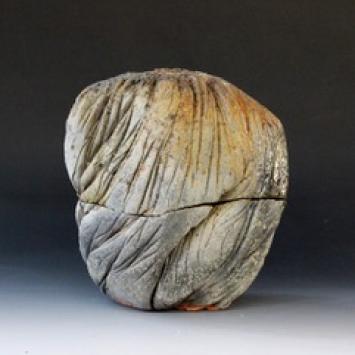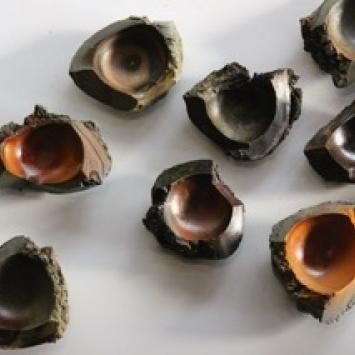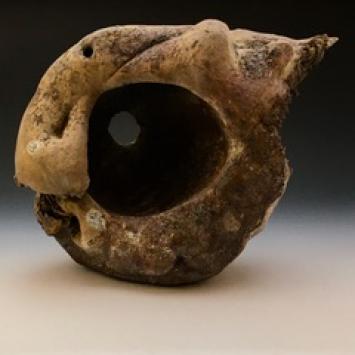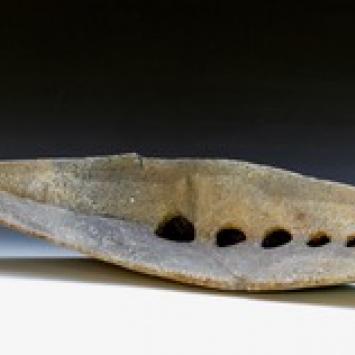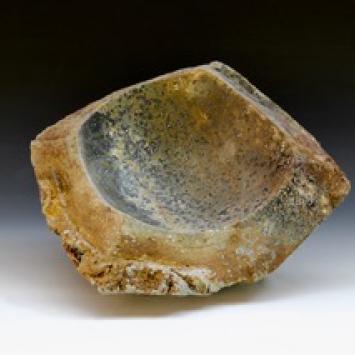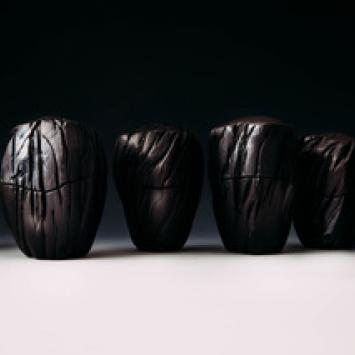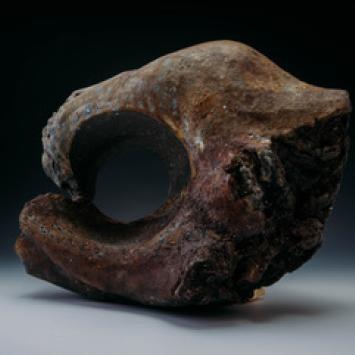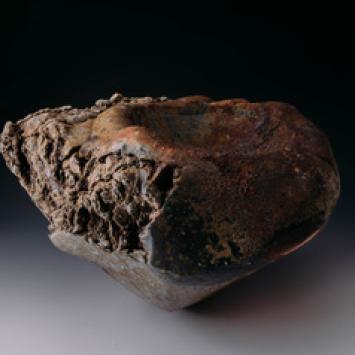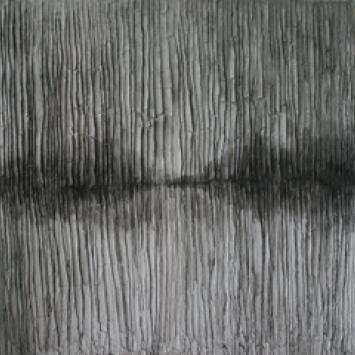Hillary Kane
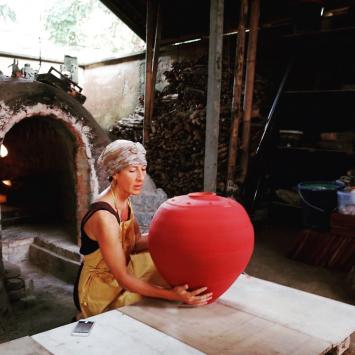
For Hillary Kane, life is a lot about place. Over the years, “home” has shifted across countries and continents and delivered a richness in languages and cultures, inspiration and challenges that permeate her making practice. Originally having studied painting and printmaking (in Maine and France), it was her work with local farmers in a remote village in west Cameroon that triggered her gut-pull to the medium of clay. A stint at Penland School of Crafts, NC solidified this interest and subsequent experiences from New England to New Mexico initiated and strengthened her passion for wood-firing in particular. The tidal pull of the world led her to ultimately to settle in Bali, Indonesia where she continues to focus her creativity in both clay and paint, enjoying the dynamic of two very different mediums and their possible confluence. Wood-fire ceramics has dominated the picture and led her to numerous residencies and conferences globally, as well as to pioneer several wood-firing kilns in Bali. In 2010 she co-founded Gaya Ceramic Arts Center (Ubud, Bali) and has since been directing its growth: developing an international workshop program and artist residency, hosting as well as instructing, and ever continuing with the creative process. Included in that creativity has been the joy and life-changing amazement of raising twin daughters. At very present, she is embarking on a bi-hemispheric lifestyle, splitting time between the lush and heady tropical backdrop of her island life and the cyclical seasons of her New England upbringing-- embracing the duality of home in two disparate worlds; searching for a fluency between them.
Artist Statement
I see my artwork as a window into realms interior in which the process, the very visceral act of creating is as significant as the final outcome. It is labyrinthine in its development and I am entranced by the visual traces of this journey and the slow development of a patina of color and texture, the subtle variation of simple forms, and the impact of timing, of Time. Accrued over the course of a multi-day wood-firing or accumulated in a build up and break down of brush strokes, to me, these skin layers are reminiscent of geological formations, of the accretion of bodily experience over a lifetime, and the summary evidence of age upon our own tissue surfaces.
Process. Vessel. Body. Motherhood. Journey. Confluence of media. Precarious balance paired with enormous bulk and heft. The question of home, of belonging, of roots. The weight of what it means to be alive. These are the various recurrent themes asked and yet unanswered in my work.
Residency Goals
It has been quite a long while that I have been ruminating over a concept that I would like to propose for this residency period. It is part of an emerging sequence in my work that I like to refer to as my “human archaeology series” because the abstract appearance of sculptural forms belie their direct reference to human anatomy. I often exaggerate scale to suggest monumentality, and most often utilize the patina of wood-firing to give the tactile sensation of an object literally unearthed. For me, these forms stand as relics documenting the slow process of coming to grips with the genetic neuro-muscular condition with which my daughters were diagnosed 5 years ago.
I would like to pursue this wistful re-mystification of body parts: vertebrae and hip joints, pelvic girdle and cranium that, although beautiful in and of themselves in x-ray form, also generate great anxiety and grief when viewed from the standpoint of a mother faced with the clinical realities they represent. Somehow I need to dispel this fear, or confront it, and by studying the contours of form and shape and shadow, by giving creative attention and intention to them, I am able to begin to do so. I envision working up two series within this collection: firstly, palm-sized pieces in polished porcelain, unfired, but waxed to resemble both the texture and color of bone, and intended as objects invited to be held, stroked, felt. I suppose it is my way of dealing with the gravity of life: a contemplation on willful wishing, unpronounced prayers, encountering the deepest root of dread. By processing it through my hands, thus my heart.
As relics in the sense of artifacts of contemplation given reverence in their personalized representation, these objects obviously need housing. For this I plan to access another series of works common to my practice: “kurinuki” box forms. Like geologic remnants, there is symbolism in the hollowing out of what appears to be a chiseled piece of rock—it becomes the cutting of a tomb out of a cliff side, a grave out of frozen ground, an altar out of volcanic spew. It is an act of necessity and veneration, both. So these will be the reliquaries to safeguard the delicate, unfired porcelain “bones”, a reminder of all that is ephemeral and yet how infinitely we try to defend against it. The boxes I imagine to be fired: likely using a black saggar technique and lined with gold leaf. The second aspect of the collection will be the more monumental artifacts: large abstract sculptures, wood-fired, perhaps accompanied by large-scale raw paper-clay wall pieces.
If there is a possibility of exhibition, I would like there to be a very intentionally participatory quality to this as an installation of individual pieces. It may be interesting to catalogue the manner in which viewers open box forms, hold, lift, and react to the pieces within. What is it to hold something precious of another? To witness that individual’s palpable fragility? What does it mean to potentially view healing as a collective act?


